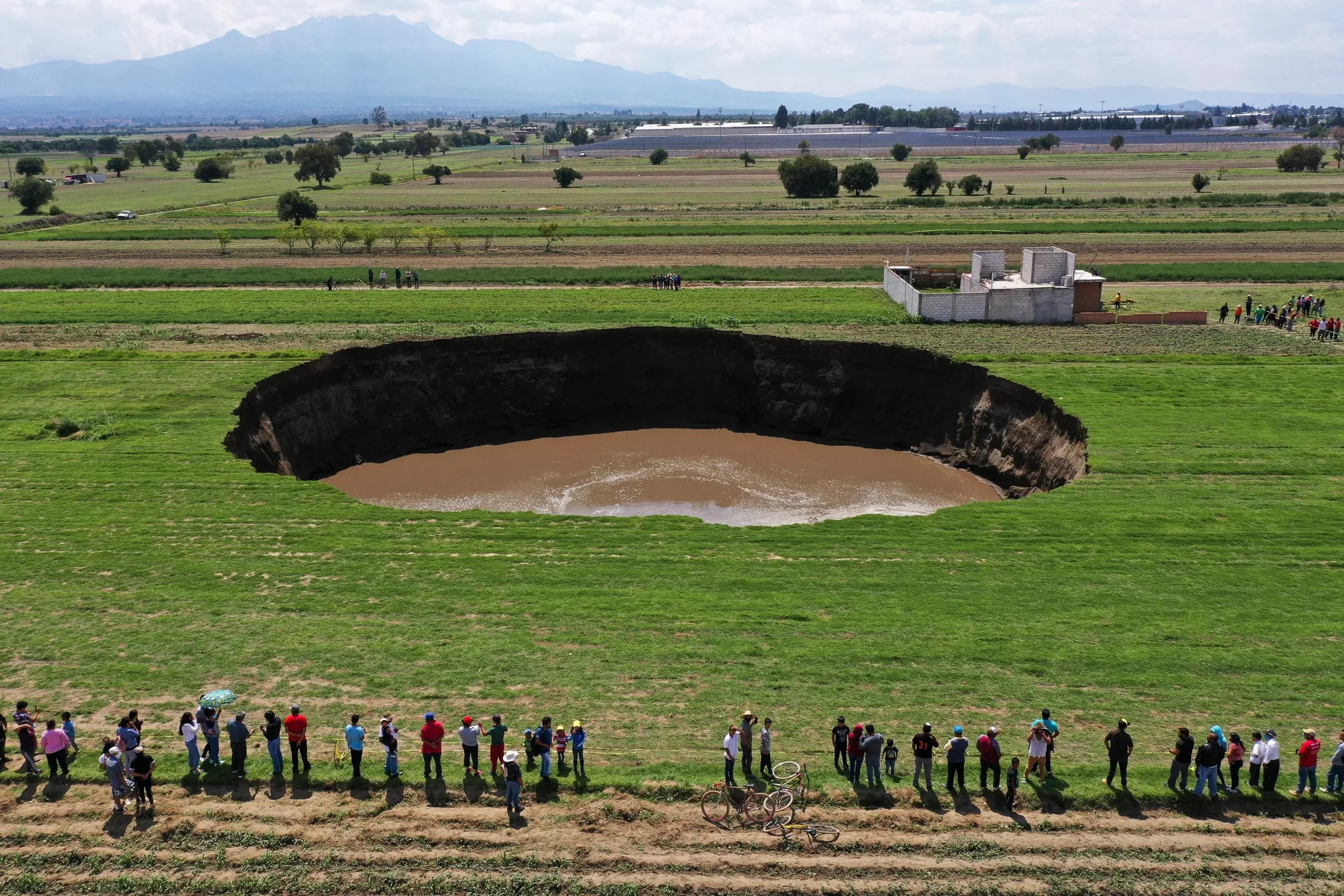The AI Sink-hole effect
The AI revolution isn’t just creating new tools—it’s collapsing ecosystems. Each time a dominant platform expands its capabilities, the ground shifts beneath the products that once thrived around it. This dynamic is what I call the Sinkhole Effect: the gravitational pull of a general-purpose AI layer that consumes the value of the specialized tools orbiting it.
A large sinkhole that appeared on farmland in the Mexican state of Puebla on May 29 continues to grow. Credit - Jose Castanares / Agencia EsImagen.mx via Storyful
In the traditional software world, layers coexisted. Productivity tools sat on top of platforms, APIs connected them, and orchestration tools linked everything together. But as large-scale models like ChatGPT evolve from application to operating system, they begin to absorb entire categories of downstream software. The conversational interface becomes the new gravity well. Everything that was once discrete - writing assistants, image editors, workflow builders - starts falling inward.
A striking example of this is Make.com, the visual automation platform that enables users to build complex workflows without code. For years, Make carved out a niche by empowering non-technical people to connect APIs, trigger automations, and orchestrate data across systems. But with ChatGPT’s latest release, OpenAI has moved decisively into the same territory. The new ChatGPT can now build and run native automations directly in the chat window, connecting to third-party apps and orchestrating actions across them through natural language. In other words, ChatGPT just became an automation hub.
The implications are broad. Zapier faces a similar gravitational threat, as ChatGPT begins to automate the “if-this-then-that” logic users once paid Zapier to handle. Canva, too, is being pulled into the sinkhole as image generation and layout design become native capabilities within large models. Even Notion, once the darling of productivity apps, now contends with ChatGPT extensions that can read, summarize, and generate structured documents natively. Each of these platforms risks losing surface-level relevance as the AI layer underneath grows more capable.
The Sinkhole Effect doesn’t happen all at once. It’s a slow, silent collapse. Users don’t consciously abandon a platform; they simply stop needing it. The gravitational pull of convenience draws them toward a single hub where every function is a prompt away. We’ve seen this before. Google absorbed discovery, iOS absorbed utilities, Salesforce absorbed customer data. Now ChatGPT is doing the same to the new generation of AI-enabled productivity and automation tools.
For companies like Make.com, survival means moving deeper, not wider. It means owning the last mile - governance, reliability, and visibility that ChatGPT won’t easily replicate. It means building trust through transparency and compliance, offering the audit trails that enterprise users demand. Most importantly, it means integration rather than competition: becoming the orchestration engine beneath the conversational layer instead of competing with it.
Once a platform like ChatGPT shifts from product to infrastructure, every other product in its gravitational field faces a choice. You can be absorbed - or you can become indispensable. The challenge of the next decade will be deciding which side of the sinkhole you stand on.

